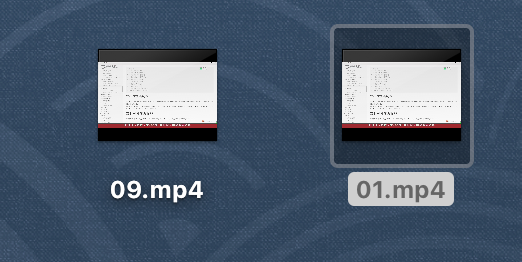Netty進階基礎篇之NIO Channel篇(4)
1、Channel概念
通道(Channel):用於源節點與目標節點的連線。在 Java NIO 中負責緩衝區中資料的傳輸。Channel 本身不儲存資料,因此需要配合緩衝區進行傳輸
2、 Channel主要實現的類
|--FileChannel 本地io
|--SocketChannel TCP網路io
|--ServerSocketChannel TCP網路io
|--DatagramChannel UDP網路io
3、 獲取通道
3.1 Java 針對支援通道的類提供了 getChannel() 方法
本地 IO:FileInputStream、FileOutputStream、 RandomAccessFile
網路IO:Socket、ServerSocket、DatagramSocket
//利用通道完成檔案的複製(非直接緩衝區)
@Test
public void test1(){
long start = System.currentTimeMillis();
FileInputStream fis = null;
FileOutputStream fos = null;
//①獲取通道
FileChannel inChannel = null;
FileChannel outChannel = null;
try {
fis = new FileInputStream("/Users/tentsuuhou/Desktop/01.mp4");
fos = new FileOutputStream("/Users/tentsuuhou/Desktop/09.mp4");
inChannel = fis.getChannel();
outChannel = fos.getChannel();
//②分配指定大小的緩衝區
ByteBuffer buf = ByteBuffer.allocate(1024);
//③將通道中的資料存入緩衝區中
while(inChannel.read(buf) != -1){
buf.flip(); //切換讀取資料的模式
//④將緩衝區中的資料寫入通道中
outChannel.write(buf);
buf.clear(); //清空緩衝區
}
} catch (IOException e) {
e.printStackTrace();
} finally {
if(outChannel != null){
try {
outChannel.close();
} catch (IOException e) {
e.printStackTrace();
}
}
if(inChannel != null){
try {
inChannel.close();
} catch (IOException e) {
e.printStackTrace();
}
}
if(fos != null){
try {
fos.close();
} catch (IOException e) {
e.printStackTrace();
}
}
if(fis != null){
try {
fis.close();
} catch (IOException e) {
e.printStackTrace();
}
}
}
long end = System.currentTimeMillis();
System.out.println("耗費時間為:" + (end - start));
}我用的是mac系統,01.mp4視訊25M左右,第一次複製時間1024ms,然後覆蓋重新執行,大概左右在683ms,如果可以,大家可以試試1G以上的視訊,看看需要多久


3.2、在 JDK 1.7 中的 NIO.2 針對各個通道提供了靜態方法 open()
//使用直接緩衝區完成檔案的複製(記憶體對映檔案)
@Test
public void test2(){
long start = System.currentTimeMillis();
FileChannel inChannel = null;
FileChannel outChannel= null;
try {
inChannel = FileChannel.open(Paths.get("/Users/tentsuuhou/Desktop/01.mp4"), StandardOpenOption.READ);
outChannel = FileChannel.open(Paths.get("/Users/tentsuuhou/Desktop/08.mp4"), StandardOpenOption.WRITE, StandardOpenOption.READ, StandardOpenOption.CREATE);
//記憶體對映檔案
MappedByteBuffer inMappedBuf = inChannel.map(MapMode.READ_ONLY, 0, inChannel.size());
MappedByteBuffer outMappedBuf = outChannel.map(MapMode.READ_WRITE, 0, inChannel.size());
//直接對緩衝區進行資料的讀寫操作
byte[] dst = new byte[inMappedBuf.limit()];
inMappedBuf.get(dst);
outMappedBuf.put(dst);
} catch (IOException e){
e.printStackTrace();
} finally {
try {
inChannel.close();
} catch (IOException e) {
e.printStackTrace();
}
try {
outChannel.close();
} catch (IOException e) {
e.printStackTrace();
}
}
long end = System.currentTimeMillis();
System.out.println("耗費時間為:" + (end - start));
}第一次:371ms,第二次104ms,證明直接緩衝區比間接緩衝區效率搞了很多。
3.3、在 JDK 1.7 中的 NIO.2 的 Files 工具類的 newByteChannel()
直接位元組緩衝區還可以通過FileChannel的map()方法將檔案區域直接對映到記憶體中來建立。該方法返回 MappedByteBuffer 。Java 平臺的實現有助於通過 JNI 從本機程式碼建立直接位元組緩衝區。如果以上這些緩衝區 中的某個緩衝區例項指的是不可訪問的記憶體區域,則試圖訪問該區域不會更改該緩衝區的內容,並且將會在 訪問期間或稍後的某個時間導致丟擲不確定的異常。
@Test
public void test7(){
long start = System.currentTimeMillis();
FileChannel in = null;
FileChannel out = null;
try {
in = (FileChannel) Files.newByteChannel(Paths.get("/Users/tentsuuhou/Desktop/01.mp4"),StandardOpenOption.READ);
out = (FileChannel) Files.newByteChannel(Paths.get("/Users/tentsuuhou/Desktop/07.mp4"),StandardOpenOption.READ,StandardOpenOption.WRITE,StandardOpenOption.CREATE);
MappedByteBuffer inMap = in.map(MapMode.READ_ONLY,0,in.size());
MappedByteBuffer outMap = out.map(MapMode.READ_WRITE,0,in.size());
byte[] bytes = new byte[inMap.limit()];
//直接對緩衝區進行資料的讀寫操作
inMap.get(bytes);
outMap.put(bytes);
} catch (IOException i){
i.printStackTrace();
} finally {
try {
in.close();
} catch (IOException e) {
e.printStackTrace();
}
try {
out.close();
} catch (IOException e) {
e.printStackTrace();
}
}
long end = System.currentTimeMillis();
System.out.println(end-start);
}
同樣使用的是直接緩衝區,速度和上面基本一致,只不過這個是用newByteChannel() 方法建立通道。
4、通道之間的資料傳輸
4.1 transferFrom()
4.2 transferTo()
//通道之間的資料傳輸(直接緩衝區)
@Test
public void test3(){
FileChannel inChannel = null;
FileChannel outChannel = null;
try {
inChannel = FileChannel.open(Paths.get("/Users/tentsuuhou/Desktop/01.mp4"), StandardOpenOption.READ);
outChannel = FileChannel.open(Paths.get("/Users/tentsuuhou/Desktop/06.mp4"), StandardOpenOption.WRITE, StandardOpenOption.READ, StandardOpenOption.CREATE);
//使用下面transferTo 或者 transferFrom 都可以達到目的
//inChannel.transferTo(0, inChannel.size(), outChannel);
outChannel.transferFrom(inChannel, 0, inChannel.size());
} catch (IOException e){
e.printStackTrace();
} finally {
try {
inChannel.close();
} catch (IOException e) {
e.printStackTrace();
}
try {
outChannel.close();
} catch (IOException e) {
e.printStackTrace();
}
}
}
5、分散(Scatter)與聚集(Gather)
5.1 分散讀取(Scattering Reads):將通道中的資料分散到多個緩衝區中
5.2 聚集寫入(Gathering Writes):將多個緩衝區中的資料聚集到通道中
//分散和聚集
@Test
public void test4() throws IOException{
RandomAccessFile raf1 = new RandomAccessFile("1.txt", "rw");
//1. 獲取通道
FileChannel channel1 = raf1.getChannel();
//2. 分配指定大小的緩衝區
ByteBuffer buf1 = ByteBuffer.allocate(100);
ByteBuffer buf2 = ByteBuffer.allocate(1024);
//3. 分散讀取
ByteBuffer[] bufs = {buf1, buf2};
channel1.read(bufs);
for (ByteBuffer byteBuffer : bufs) {
byteBuffer.flip();
}
System.out.println(new String(bufs[0].array(), 0, bufs[0].limit()));
System.out.println("-----------------");
System.out.println(new String(bufs[1].array(), 0, bufs[1].limit()));
//4. 聚集寫入
RandomAccessFile raf2 = new RandomAccessFile("2.txt", "rw");
FileChannel channel2 = raf2.getChannel();
channel2.write(bufs);
}
沒有什麼效率的問題,只是記住有這麼一個功能就好了
6、字符集:Charset
6.1 編碼:字串 -> 位元組陣列
6.2 解碼:位元組陣列 -> 字串
//字符集
@Test
public void test6() throws IOException{
Charset cs1 = Charset.forName("utf-8");
//獲取編碼器
CharsetEncoder ce = cs1.newEncoder();
//獲取解碼器
CharsetDecoder cd = cs1.newDecoder();
CharBuffer cBuf = CharBuffer.allocate(1024);
cBuf.put("我愛開源中國,作者MuJiuTian!");
cBuf.flip();
//編碼
ByteBuffer bBuf = ce.encode(cBuf);
for (int i = 0; i < 36; i++) {
System.out.println(bBuf.get());
}
//解碼
bBuf.flip();
CharBuffer cBuf2 = cd.decode(bBuf);
System.out.println(cBuf2.toString());
System.out.println("------------------------------------------------------");
Charset cs2 = Charset.forName("utf-8");
bBuf.flip();
CharBuffer cBuf3 = cs2.decode(bBuf);
System.out.println(cBuf3.toString());
}
